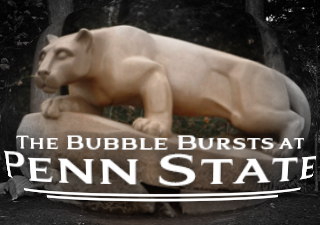Media
Taxpayers Can Double their “Return on Investment” on Higher Ed
 Penn State’s provost Rodney Erickson tries to undercut Michael Poliakoff & Charles Mitchell in a recent op-ed.
Penn State’s provost Rodney Erickson tries to undercut Michael Poliakoff & Charles Mitchell in a recent op-ed.
His concluding argument is that “out of every $1 invested in Penn State by the commonwealth, the university returns $25 in economic benefit.” Surely Penn State has an economics or finance professor who could have advised Erickson that was a silly statement to make.
Every industry and every business—and higher education is just another industry and Penn State is a very large business—creates jobs and adds to the economy. Some do it with a lot of government subsidy, and some do it with little taxpayer subsidy—but most do it without any direct taxpayer support.
The “return on investment” for businesses that get no taxpayer money is infinity, so by Mr. Erickson’s logic, they all deserve taxpayer support. For instance, if state lawmakers decided to give Wal-Mart $1 as a line item in the budget, they could then claim that dollar created tens of thousands of jobs and billions of activity—and the “return on investment” would be so great that we need to give more money to Wal-Mart.
Even a non-economist can recognize the fallacy of this argument, as it would imply Wal-Mart would produce nothing without $1 in state subsidy. In the case of Penn State, Mr. Erickson is basically claiming that, if the state cuts (representing 4 percent of PSU’s budget) go through, the university will cease to exist.
In reality, Penn State will stay about the same size, with the same number of jobs and economic activity. But by cutting direct state aid in half, taxpayers would get a “return” of $50 for every $1 “invested.”
Who could oppose doubling taxpayers’ “return on investment”?